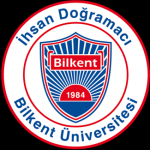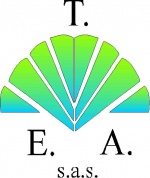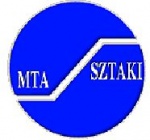Background
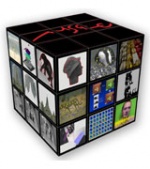 |
One important achievement of the Muscle group is the Muscle Network of Excellence, partially funded by the European Commission (FP6-507752, 1 March 2004 - 29 February 2008), managed by ERCIM and coordinated by Eric Pauwels (CWI, NL) and Nozha Boujemaa (INRIA, F) |
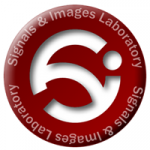 |
The Signal & Images Lab at ISTI-CNR (SI Lab) is working in the fields of signal processing, image understanding and artificial vision. Sensorial information is increasing its importance in both our everyday lives and the most advanced technological and scientific contexts. In particular, visual and audio information is becoming the most significant part of the global information to be processed, understood and manipulated. Our general goal is to increase the knowledge in signal processing, image understanding and artificial vision. This will be achieved by studying and developing models, methods and machines for the formation, processing, analysis and recognition of images and signals, and by applying them to several areas of scientific and technological interest. |
 |
The AYIN project-team (Ayin) is located at INRIA Sophia-Antipolis Méditerranée and aims to provide image processing tools to aid in the solution of problems arising in a wide range of concrete applications in Earth observation and cartography, for example cartographic updating, land management, and agriculture, while at the same time advancing the state of the art in the image processing methods used to construct those tools. An important recent theme, for example, is the incorporation of geometric information into stochastic and variational techniques, in the probabilistic case via the use of stochastic geometry, and in the variational case via the use of higher-order active contours. |
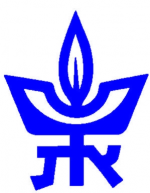 |
TAU-VISUAL at Tel Aviv University specializes in the extraction and processing of visual information from video and still images. The group has substantial expertise in the use of variational methods to solve fundamentally difficult problems, such as restoration, registration and segmentation of images and video. Typical application domains include medical image analysis, image retrieval, video analytics, environmental monitoring and 3D image acquisition. |
 |
The Computer Vision and Multimedia Laboratory (CVML ) of the University of Geneva is divided into three groups and carries out research in multimedia data processing, multimedia data management and security, as well as in multimodal human-machine interaction. Content-based Visual Indexing and Retrievalgroup: evelops strategies for the efficient indexing retrieval and exploration of large multimedia databases. Stochastic Information Processing group: studies various aspects of information theory and statistical (stochastic) information analysis and processing. Multimodal Interaction group: studiesvarious forms of interaction between humans, computers, and environment. Some considered interaction modalities are haptic, auditory, and based on physiological signals. Current developments concern: affective state determination and emotion recognition and their use for affective computing, multimodal interaction, brain-computer interfaces, mobility aids for sight handicapped people,object identification and authentication based on unclonable object features in large nonstructured databases, indexing and retrieval in very large multimedia databases, privacy preserving search, indexing and multiclass classification. |
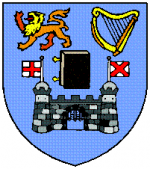 |
The School of Computer Science and Statistics in Trinity College Dublin has two collaborating groups, GV2 and Statica, that carries out activities on multimedia data (e.g. images, video and sound), sensor network data (e.g. road trafic, communications networks, camera network, motion capture) and environmental data (e.g. weather). STATICA focuses on Bayesian inference to solve statistical problems that arise in computer science, information systems and telecommunications focusing on developing statistical techniques to analyse large and complex data. GV2, the Graphics Vision and Visualisation group, has expertises in computer graphics, computer vision and all aspects of visual computing. GV2 was formed in 2006 with the integration of two longstanding TCD research groups: the Image Synthesis Group [ISG], established in 1993, and the Computer Vision and Robotics Group [CVRG], which was established 1983. |
 |
The research group "Visual Information Processing" consists of members of the University of Granada and the University of Jaén, from complementing fields as mathematics, statistics, computer science and physics, we carry out research on image restoration and enhancement, superresolution from compressed and uncompressed stills and video sequences, information retrieval from image and video databases, extraction of 3D information from video sequences for multimedia applications, tracking algorithms and optical flow, visual-statistical approach to multi-scale multiorientation representation models, computational photography, compressive sensing, active learning, fuzzy image processing, image classification and pattern recognition and multispectral image processing. |
 |
The Pattern Recognition department of the Institute of Information Theory and Automation of the Academy of Sciences of the Czech Republic is a basic research unit oriented to statistical model-based pattern recognition and computer vision areas. The department has achieved leading position in several areas of statistical pattern recognition, mainly in the physically correct modelling and recognition of visual surface properties and feature selection. The PR department consists of 12 staff members and 6 doctoral students. The department head is Prof. Ing. Haindl Michal, DrSc. |
 |
VTT, Technical Research Centre of Finland, is the biggest multi-technological applied research organisation in Northern Europe. With its staff of 3,100, its unique research facilities and extensive global co-operation networks, it provides leading-edge technology solutions and innovation services. VTT works to enhance its customers’ competitiveness and competence, creating the prerequisites for society’s sustainable development, employment and wellbeing. Augmented Reality (AR) is the technique of superimposing virtual objects in the user's view of the real world, providing a novel visualisation technology for a wide range of application. The Augmented Reality research group consists of two teams: 3D Tracking and Mixed Reality. Teams started working in the AR field in 2000 with the development of virtual advertisements for live TV broadcast. In the following years teams expanded their expertise to several application areas in ICT, media, industry and building & construction. The augmented reality research group has strong scientific competence and has participated in a number of EU projects relating the area, for example INMOVE, CADPIPE, MUSCLE NoE, INTUITION NoE, and the ongoing ITEA2 project ViCoMo. |
 |
SBA Research is a research center for Information Security funded by the national initiative for COMET Competence Centers for Excellent Technologies. We bring together 25 companies, 4 Austrian universities, one university of applied sciences, a non-university research institute, and many international research partners to jointly work on challenges ranging from organizational to technical security. |
 |
The Image and Video Processing group at UPC is a research group located in Barcelona. Its main research activities focus on Image Analysis and Video Representation. Regarding analysis, the GPI specializes in basic tools for analysis such as nonlinear filtering, mathematical morphology, segmentation (with Binary Partition Trees), face detection and recognition, multiview analysis for stereo and 3D reconstruction, object tracking, body tracking, gesture analysis, emotion recognition and the modelling of human activity. The Group also develops biomedical, remote-sensing, watermarking applications and multimodal interfaces (Smart Rooms). GPI video compression activities have been the basis of applications related to content-based video coding, video indexing and the creation of tables of content and contributions to international standardization processes such as MPEG-4 and MPEG-7. Most recently GPI is conducting research in multi-view/3D representation and coding. |
 |
INESC TEC is involved in scientific research and technological development, advanced training, consulting and technology transfer. The main areas of activity are Telecommunications and Multimedia, Power Systems, Manufacturing Systems, Information and Computer Graphics Systems, Optoelectronics and Electronic Systems, Robotics and Intelligent Systems, Innovation and Technology Transfer. INESC TEC is involved in the ERCIM MUSCLE Working Group with a team that is leading research in multimedia information retrieval within the Information and Computer Graphics Systems unit. |
